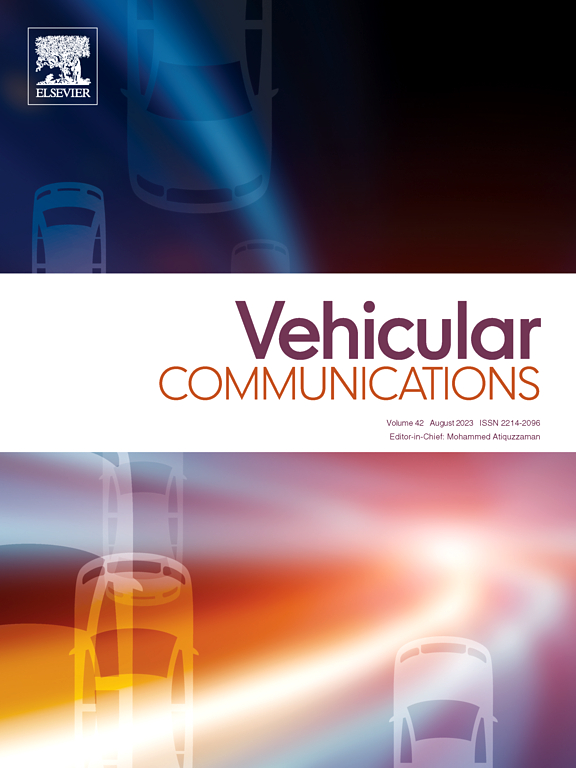A survey of intelligent reflecting surfaces: Performance analysis, extensions, potential challenges, and open research issues
IF 6.5
2区 计算机科学
Q1 TELECOMMUNICATIONS
引用次数: 0
Abstract
The rapid advancements in wireless communication have underscored the need for innovative solutions to enhance network performance, spectral efficiency, and energy savings. Intelligent Reflecting Surface (IRS) technology has emerged as a transformative approach that passively reconfigures wireless propagation environments, offering significant improvements without active power consumption. This survey provides a comprehensive analysis of IRS technology, covering its architecture, operational principles, and integration into next-generation wireless networks. We examine key performance metrics in various application scenarios, demonstrating IRS's potential to improve coverage, signal quality, and energy efficiency, with up to 40% higher spectral efficiency and substantial energy savings over traditional networks. The survey also explores the integration of IRS with advanced multiple access techniques such as Non-Orthogonal Multiple Access (NOMA) and Terahertz (THz) communication, positioning IRS as a critical enabler in future 6G networks. This survey contributes by offering an in-depth review of IRS design principles and operational mechanisms, presenting a performance analysis in various scenarios that highlights IRS's ability to improve network efficiency, and identifying practical challenges and open research areas, such as the need for robust channel estimation methods, effective interference management in dense networks, and IRS solutions scalable for urban and rural deployments. Additionally, we discuss the future trajectory of IRS standardization and the regulatory frameworks essential for large-scale deployment. By summarizing advancements and identifying key research directions, this survey aims to serve as a valuable reference for researchers and practitioners seeking to advance IRS technology in future wireless networks.
智能反射面调查:性能分析、扩展、潜在挑战和开放研究问题
无线通信的快速发展强调了对创新解决方案的需求,以提高网络性能、频谱效率和节能。智能反射面(IRS)技术已经成为一种变革性的方法,可以被动地重新配置无线传播环境,在不消耗有源功率的情况下提供显著的改进。本调查提供了IRS技术的全面分析,涵盖其架构、操作原理以及与下一代无线网络的集成。我们研究了各种应用场景中的关键性能指标,展示了IRS在提高覆盖范围、信号质量和能源效率方面的潜力,与传统网络相比,它的频谱效率可提高40%,并节省了大量能源。该调查还探讨了IRS与先进多址技术(如非正交多址(NOMA)和太赫兹(THz)通信)的集成,将IRS定位为未来6G网络的关键推动因素。该调查提供了对IRS设计原则和运行机制的深入回顾,提出了在各种场景下的性能分析,突出了IRS提高网络效率的能力,并确定了实际挑战和开放的研究领域,例如对稳健信道估计方法的需求,密集网络中的有效干扰管理,以及可扩展的城市和农村部署的IRS解决方案。此外,我们还讨论了IRS标准化的未来轨迹和大规模部署所必需的监管框架。通过总结研究进展并确定关键研究方向,本研究旨在为未来无线网络中寻求推进IRS技术的研究人员和实践者提供有价值的参考。
本文章由计算机程序翻译,如有差异,请以英文原文为准。
求助全文
约1分钟内获得全文
求助全文
来源期刊

Vehicular Communications
Engineering-Electrical and Electronic Engineering
CiteScore
12.70
自引率
10.40%
发文量
88
审稿时长
62 days
期刊介绍:
Vehicular communications is a growing area of communications between vehicles and including roadside communication infrastructure. Advances in wireless communications are making possible sharing of information through real time communications between vehicles and infrastructure. This has led to applications to increase safety of vehicles and communication between passengers and the Internet. Standardization efforts on vehicular communication are also underway to make vehicular transportation safer, greener and easier.
The aim of the journal is to publish high quality peer–reviewed papers in the area of vehicular communications. The scope encompasses all types of communications involving vehicles, including vehicle–to–vehicle and vehicle–to–infrastructure. The scope includes (but not limited to) the following topics related to vehicular communications:
Vehicle to vehicle and vehicle to infrastructure communications
Channel modelling, modulating and coding
Congestion Control and scalability issues
Protocol design, testing and verification
Routing in vehicular networks
Security issues and countermeasures
Deployment and field testing
Reducing energy consumption and enhancing safety of vehicles
Wireless in–car networks
Data collection and dissemination methods
Mobility and handover issues
Safety and driver assistance applications
UAV
Underwater communications
Autonomous cooperative driving
Social networks
Internet of vehicles
Standardization of protocols.
 求助内容:
求助内容: 应助结果提醒方式:
应助结果提醒方式:


